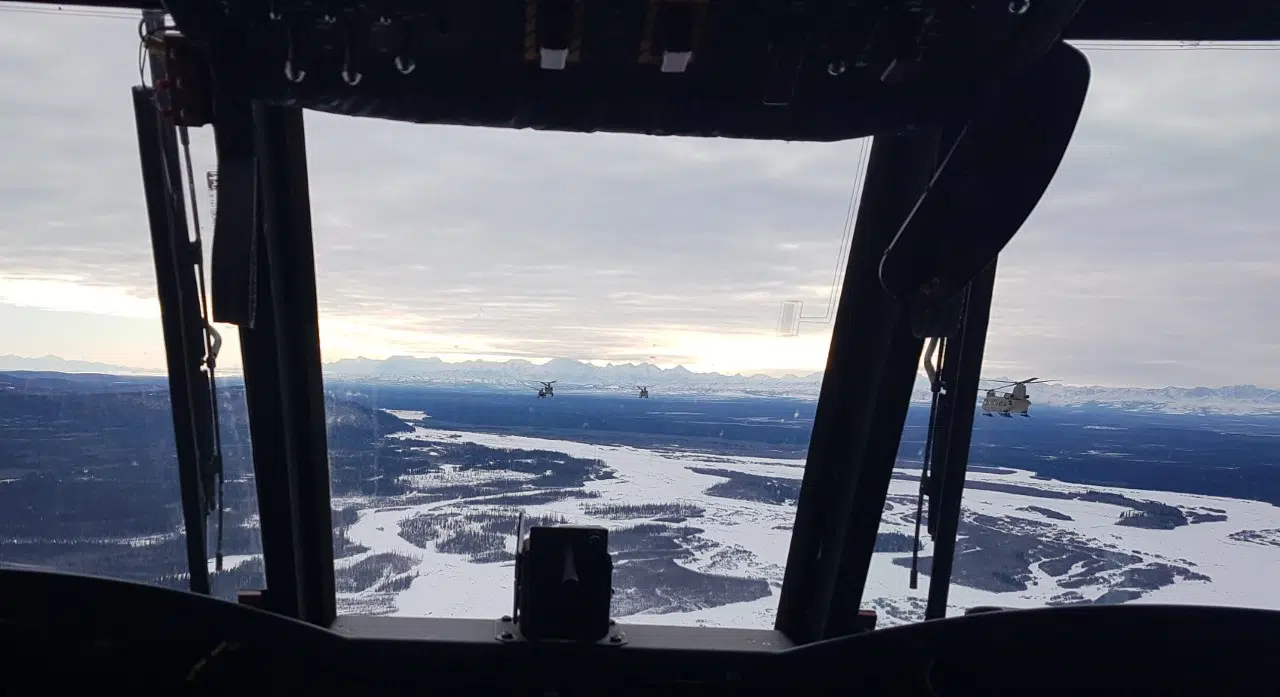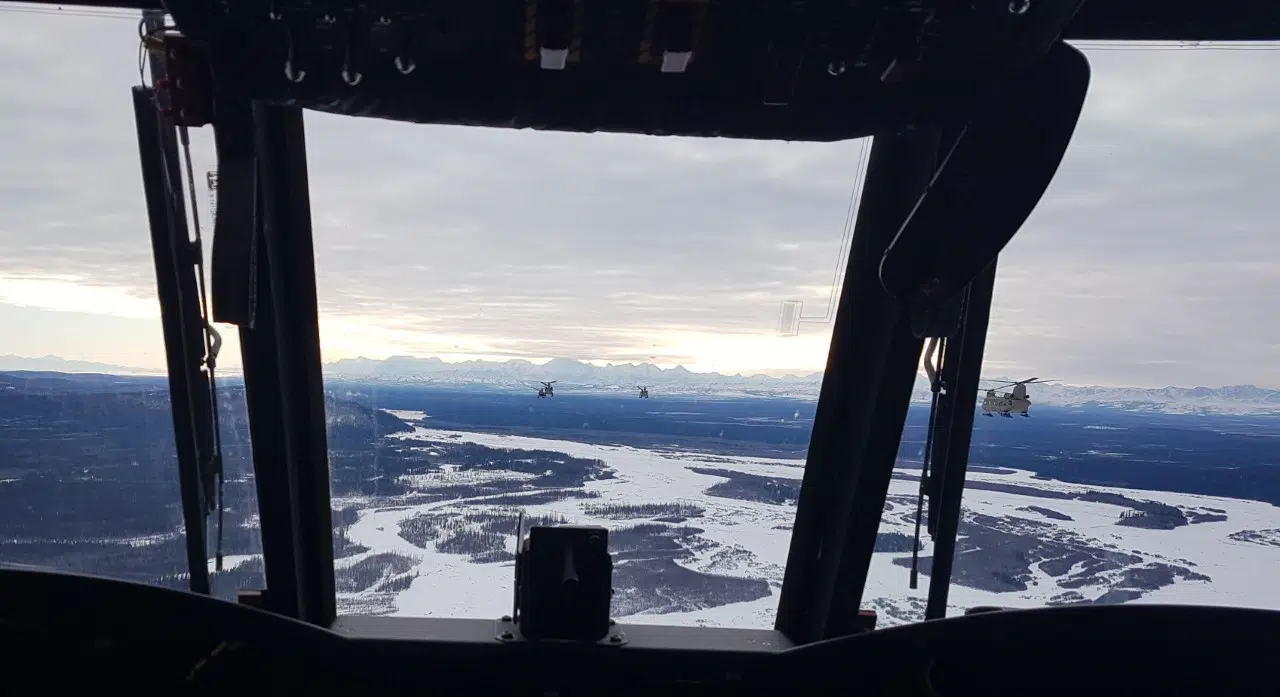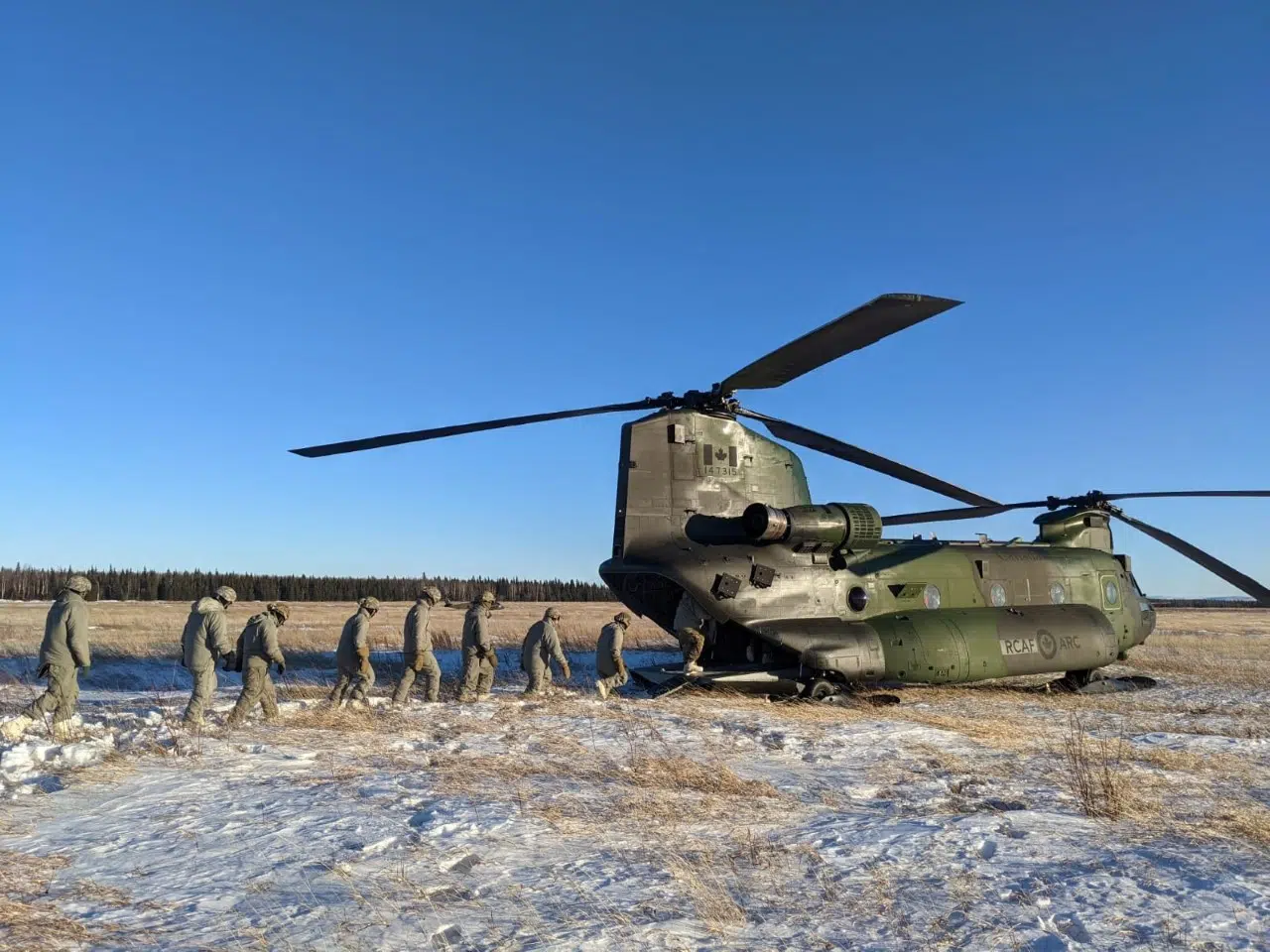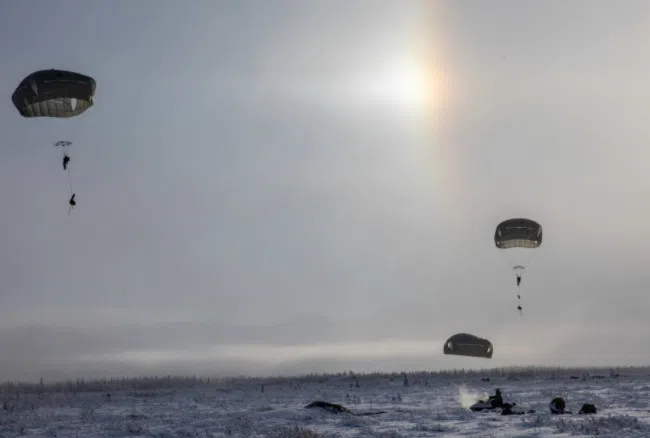
Roughly 40 troops from Garrison Petawawa have returned from a training exercise in Alaska. Lieutenant-Colonel (LCol) Rob Tyler says Exercise Arctic Warrior was a mission led by the U.S. Army. LCol Tyler says the training helped soldiers operate in remote and extreme arctic winter conditions.
He says the coldest they saw was minus 54 celsius with daytime highs of minus 30. The Commanding Officer of the 450 Tactical Helicopter Squadron at Garrison Petawawa says when an aircraft is sitting outside for an extended period of time, you can’t just start it.
Audio PlayerLCol Tyler says Chinooks don’t have block heaters and they use external gas powered heaters with hoses that run into the cockpit, engine and cabin to bring the temperature up to a normal temperature before they can start the aircraft. When they started the training exercise the Commanding Officer says it took them 2.5 hours to warm up the aircrafts and they fine tuned the process to the point where it takes about an hour to warm everything up and get going.
LCol Tyler says at those temperatures it’s beautiful flying conditions with very few clouds and a lot of sun. He adds half of the exercise was working in the cold weather and the other half was cementing their relationship with the U.S. Army. The training exercise tested the ability to rapidly prepare and deploy forces for extreme cold operations and the ability to conduct offensive and defensive operations against a near-peer threat.
Exercise Arctic Warrior involved a massive air assault with 14 helicopters including Chinooks, Black Hawks and Apaches supporting one mission.
Audio PlayerLCol Tyler says COVID-19 made things challenging. He says the unit quarantined before departure, had some members tested to ensure they weren’t bringing the virus with them and followed strict health and safety protocols. Tyler said the soldiers were still taking part in their 2-week quarantine last week. The LCol says with no positive tests among the 40 soldiers from Petawawa it shows that with proper planning these complicated training exercises can be done.
Audio PlayerExercise Arctic Warrior took place in the Donnelly Training Area near Fort Greely in Alaska from February 8th to February 19th, 2021.

Royal Canadian Air Force CH-147F Chinook helicopters from 450 Squadron join U.S military aircraft as part of a simulated air assault during the U.S. Army’s Exercise ARCTIC WARRIOR 21, which took place around the Donnelly Training Area in Alaska from February 8-19, 2021. The Tactical Air Detachment included two CH-147F Chinook helicopters with approximately 40 members (air crews, maintainers and support personnel), which operated out of Fort Wainwright, Alaska, and participated in a variety of exercise scenarios alongside our American partners to strengthen their ability to operate in Arctic conditions.

Royal Canadian Air Force CH-147F Chinook helicopters from 450 Squadron join U.S military aircraft as part of a simulated air assault during the U.S. Army’s Exercise ARCTIC WARRIOR 21.

The Aurora Borealis bright the night sky over Ladd Army Airfield in Alaska during the U.S. Army’s Exercise ARCTIC WARRIOR 21, which took place around the Donnelly Training Area in Alaska from February 8-19, 2021.

U.S. military personnel board a Royal Canadian Air Force CH-147F Chinook helicopter from 450 Squadron in the field during the U.S. Army’s Exercise ARCTIC WARRIOR 21.

Paratroopers with 1st Battalion, 501st parachute infantry regiment, 4th Infantry Brigade Combat Team (Airborne), 25th Infantry Division, conduct an airborne operation at Malemute drop zone at Joint Base Elemendorf-Richardson, Alaska, Feb., 18, 2021. Paratroopers in 4th IBCT (ABN), 25th ID, are part of the US Army’s only arctic airborne brigade and regularly conduct training in Arctic environments. (U.S. Army photograph by Staff Sgt. Alex Skripnichuk)

Paratroopers with 3rd Battalion, 509th parachute infantry regiment, 4th Infantry Brigade Combat Team (Airborne), 25th Infantry Division, descend from the sky during an airfield-seizure operation at Donnelley Training Area, Alaska, Feb., 7, 2021. Paratroopers will spend approximately ten days in the Alaskan cold conducting a near-peer combat scenario beginning with an airborne operation to secure an airfield. (U.S. Army photograph by Staff Sgt. Alex Skripnichuk)